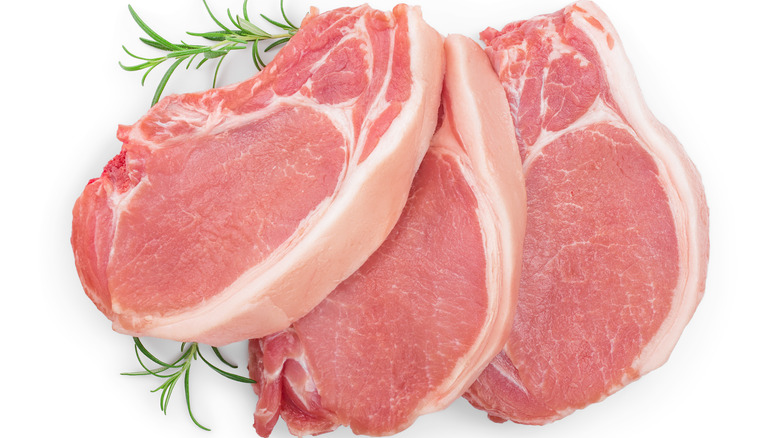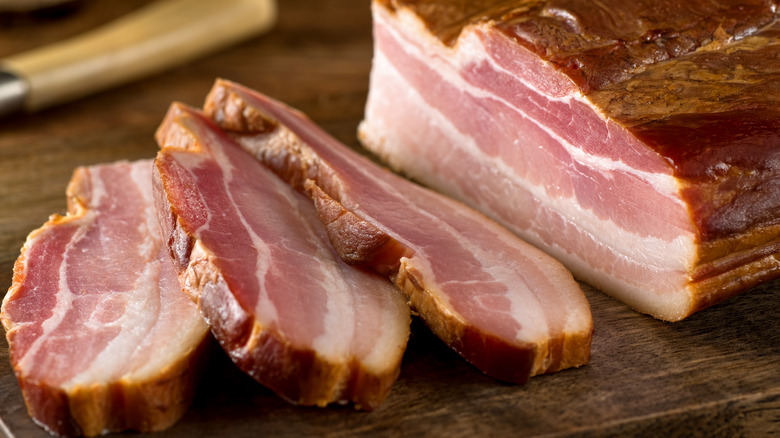The Reason You Need To Stop Trimming The Fat Off Of Pork
Pork is, to say the least, a pretty popular meat. Sentient Media estimates that an average of just over 66 pounds of pork products are eaten by Americans every year. That's a fair few pigs that have been sacrificed to feed the yearning stomachs of the U.S.
Those pigs would probably be quite annoyed if they found out they'd given so much only for you to start judging their bodies — which is essentially what you are doing when you start aggressively struggling to slice through the slithers of fat that commonly adorns joints of pork. Perhaps pigs make their fat deliberately difficult to cut just to spite us.
Regardless of whether you think fat is too chewy or excessively slimy, there is an important reason why you shouldn't cast it to one side when cooking pork. Not only could it save you the trouble of trying to saw it up, but it will also help to improve the quality of your meals.
Fat can prevent pork being ruined
As annoying as pork fat can sometimes be, it's actually a useful cooking ingredient. Having fat readily available in pork cuts can help to boost the flavor of the meat, explains Bon Appétit, possibly preventing the need to add extra enhancements such as butter and oil. Kitchn specifically praises pork fat, crediting it with a mild flavor that won't overwhelm a dish.
The Bearded Butchers adds that the longer fatty meat is cooked, the more flavor will ooze out — but you must watch out for the meat becoming tough and dry due to overcooking. This is the concern recognized by Men's Journal, which states that a lack of fat can sap the juices out of pork.
You do, of course, have to balance the benefits of cooking pork fat with its associated health implications. Although the NHS recommends removing excess fat before cooking, they also suggest buying leaner cuts of meat, not adding additional fat, and using a grill as a healthier cooking method.

